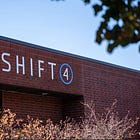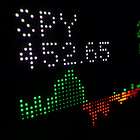Paypal, Will the Sun Shine After the Rain?
Another episode of "Stock of the Week"
Here is the 10th edition of Stock of the Week. You can find all the previous analyses and my articles on my main page (for an easier search, use a computer, mobile version is harder to navigate).
Here are the links to the 3 previous “Stocks of the Week” as well
For now, after 10 weeks, this series has brought some solid results:
PepsiCo (our second "stock of the week") was indeed in an interesting buying zone, and the stock is up 10% since the article
Alibaba has performed even better, with a 60% gain since we covered it
In the article on Palantir, I pointed out signs of a bubble. Since then, the stock has dropped 15%, and it is now down over 30% from its ATH
With Adyen, I highlighted that while it is an incredible company, its recent rally was too fast and the stock needed to cool off. Since then, it is down nearly 15% and is approaching the buying zones we identified
Of course, a few picks are still flat, but after just nine weeks, that is perfectly normal.
This week, our focus is on PayPal. After dropping 25% from its 2025 highs following its earnings report, we’ll dig into one key question: is this a strong investment opportunity?
Let me know what you think of Betsson in the comments!
One Pager
The stock at a glance!
Recent news
Paypal plans to further integrate its stablecoin, PYUSD, into its products in 2025, including a bill payment feature for over 20 million merchants
Paypal frequently announces new partnerships with customers or other fintech companies like Verifone, Adyen, JP Morgan, Fiserv, Shopify or Uber
Payal's unbranded checkout growth has slowed significantly in recent quarters, dropping from 20% to the low double digits (and less than 10% in Q4 24). This highlights the rising competition from companies like Adyen and underscores the challenges Payal faces in maintaining its market share, its most pressing weakness at the moment
Last earnings report
Paypal reported underwhelming results, with sluggish growth in unbranded checkout. While branded checkout continued to expand at a modest pace, this growth stemmed from higher revenue per existing customer rather than new customer acquisitions.
For 2025, revenue guidance is set between 4% and 5%. GAAP EPS is expected to rise by 20%, but this increase is primarily driven by the company's plan to allocate all its free cash flow to share repurchases, underscoring its struggle to identify sufficient investment opportunities.
Analysts’ recommendations
March, 06. Wolfe Research. Buy. $97 —> $90
Feb, 27. Piper Sandler. Hold. $85 —> $76
Feb, 26. Goldman Sachs. Hold. $90 —> $82
Feb, 26. Morgan Stanley. Hold. $79 —> $80
Feb, 13. CICC Research. Buy. $80 —> $95
Feb, 13. President Capital. Buy. $78 —> $92
Feb, 10. Macquarie. Buy. $115 —> $117
Feb, 06. HSBC. Buy. $104 —> $100
Feb, 05. Fubon. Hold. $82 —> $88
My analysis
Paypal continues to struggle with maintaining its market share, growth, and margins in an increasingly competitive landscape
However, with over $30B in revenue, it remains one of the industry's leaders, holding its position at the top, for now
Its valuation appears reasonable, with a PE ratio of around 14x and a free cash flow yield close to 10%. While EPS growth is largely driven by share buybacks, it should support rapid earnings expansion
That said, while PayPal may present a short-term recovery opportunity, the company still needs to prove its ability to sustain long-term growth and defend its market position
If you like Paypal and want to know more, I wrote 2 articles about the company
Technical analysis
I have defined three buying zones that I find interesting for long-term investments during pullbacks. While these zones may not be reached, I am prepared for a market (or stock) consolidation to seize long-term opportunities. For me, this approach offers a better risk/reward ratio.
Of course, this is just my opinion, and I am sharing it with you, but each investor should decide on their own investment style. With that said, here are my three buying zones for Paypal.
Buying zone 1. $67/$70 (the current zone)
Buying zone 2. $58
Buying zone 3. $50
If you enjoyed this article and like Quality Stocks, please give it a like and spread the word!
Used source: Marketscreener.com. Affiliate link just here













Minor point: PYPL does not pay any dividend, contrary to the figure in the info card at top of the article
Great analysis..what do u think about sofi?maybe a new stock tò analyse ;)